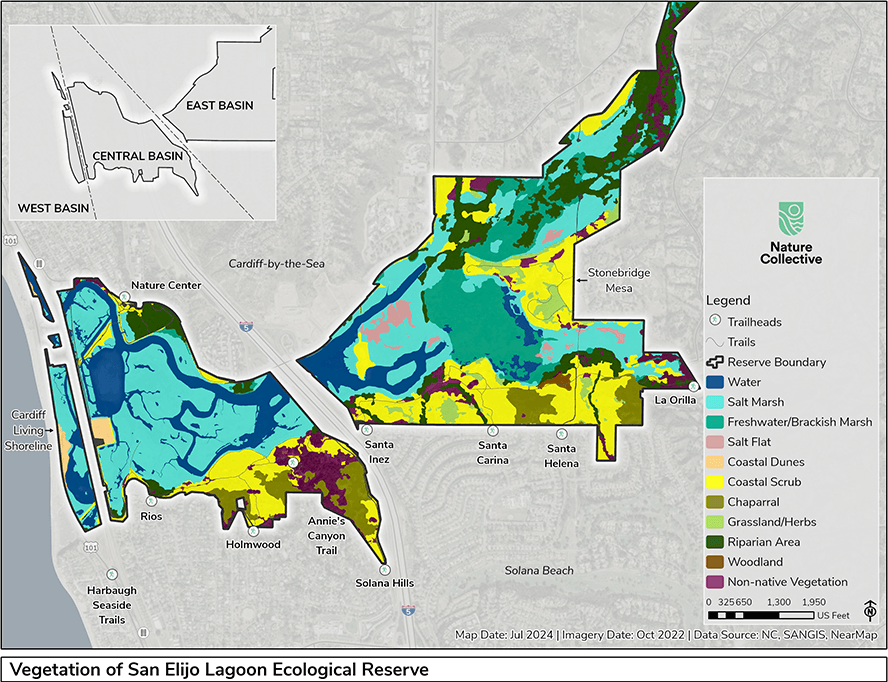Description
4,11,24,59,
California mugwort is a perennial herb that dies back in the winter.290 Tall, largely unbranched stems arise from subsurface rhizomes. Leaves are cauline, with short petioles, larger below, gradually decreasing in size; lengths vary from one to seven inches (2.5-17.5 cm). The upper leaf surface is smooth and dark green; the lower surface is white with dense woolly hairs. Most leaves are narrowly to broadly ovate or obovate with smooth margins. Larger leaves may be incised toward the apex, creating a few small teeth or larger, sharp lobes. The crushed leaves are highly aromatic, an odor likened to sage,4 to a cross between sage and camphor,35and to turpentine, kerosene or tar – sometimes with a hint of citrus.59
Flowers occur at stem ends in long, complex clusters with several orders of branching. The primary unit is the flower head, a structure composed of several individual flowers (florets) on a common base that is surrounded by specialized leaf-like structures (phyllaries). A flower head is about 3/32 inch (0.2-0.33 cm) across and 3/16 inch (0.5 cm) long. Three to ten flower heads are clustered into larger spike-like clusters that in turn are arranged along short lateral branches that spread from the main stem. A small leaf-like bract arises from each branching node, giving the cluster a leafy appearance. Each flower head consists of five or six peripheral, disk florets. These florets lack stamens. Each has one pistil with an inferior ovary and a deeply forked style that curls beyond the floret. In the center of the flower head there are seven or more bisexual disk florets, each with five stamens. The anthers have pointed appendages on the top and are fused into a column around the style, resembling a tiny crown. Both peripheral and central florets have a pale, greenish yellow corolla and lack a pappus. Flowers generally occur between May and November.1
The fruit is dry, one-seeded and does not split open at maturity. The tiny elliptical seeds are about 3/64 inches (0.1 cm) long.


















